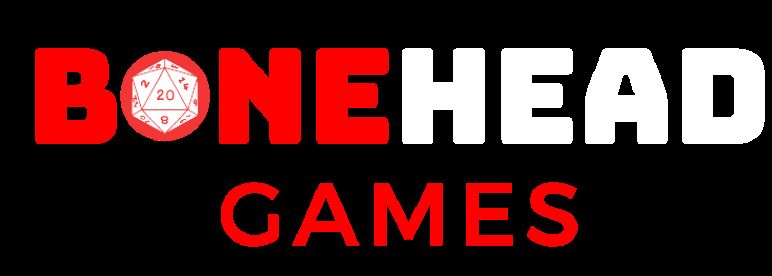After years in game design and 40+ years behind the DM screen, I’ve learned something crucial: the same psychological principles that keep players engaged in games can transform how customers interact with your business. I believe in Gamification and use it myself.
Gamification isn’t just a buzzword—it’s applied psychology that works.
Gamification Theory vs. Reality
At Bonehead Games, we help businesses implement gamification solutions because the statistics speak for themselves. But theory is one thing—real-world application is another.
That’s why I put my money where my mouth is with our sister company, Kingfisher 3D Printing.
Real-World Implementation: The Kingfisher Points System
Every purchase at Kingfisher earns points. It’s elegantly simple: 100 points = $10 off future orders. But here’s what most businesses miss—it’s not about the discount.
It’s about the progression system.
When customers see their points accumulate, they’re experiencing the same satisfaction as leveling up a character or completing a quest. That little dopamine hit keeps them coming back, not just for products, but for the experience of advancement.
Beyond Simple Rewards: Creating Meaningful Engagement
Most loyalty programs fail because they’re just disguised discounts. True gamification creates meaningful engagement through carefully designed mechanics:
Progress Visualization
- Customers can see their points balance grow
- Clear, achievable goals (100 points = reward)
- Immediate feedback on every purchase
Surprise Mechanics
- Bonus points for specific actions
- Unexpected rewards with full set purchases (like free adventure modules)
- Special recognition for repeat customers
Community Elements
- Shared experiences through our gaming content
- Recognition of customer achievements
- Connection to the broader tabletop gaming community
The Psychology Behind the Points
As someone who understands both game design and business, I can tell you why traditional discounts don’t work:
A 10% discount is just a price reduction. But earning 100 points toward a $10 reward? That’s an achievement.
The psychological difference is enormous:
- Discounts feel like charity
- Points feel like rewards you’ve earned
- Discounts are forgotten immediately
- Points create anticipation for future purchases
The Game Designer’s Advantage in Business
My background in game design gives me insights most business owners miss. I understand:
Player Motivation
- What drives continued engagement beyond simple transactions
- How to create meaningful choices that feel rewarding
- The importance of clear feedback loops in customer relationships
Progression Systems
- How to make advancement feel genuinely rewarding
- Why small, frequent rewards work better than large, rare ones
- The power of visible progress in building loyalty
Community Building
- How shared experiences create lasting loyalty
- Why recognition matters more than monetary rewards
- The value of exclusive access and insider knowledge
Measuring Success: The Kingfisher Results
Since implementing our gamification system at Kingfisher 3D Printing:
Behavioral Changes We’ve Observed:
- Customers actively ask about their points balance
- Purchase decisions factor in point optimization
- Repeat customers show significantly higher engagement
- Customer service interactions are more positive
- Word-of-mouth referrals mention the “experience,” not just products
Engagement Metrics:
- Increased repeat purchase rates
- Shorter time between purchases
- Higher customer lifetime value
- More positive customer testimonials
Common Gamification Mistakes (And How We Avoid Them)
After watching businesses fail at gamification and helping others succeed through Bonehead Games, here are the critical pitfalls:
Over-Complication
- Too many rules confuse customers
- Complex systems create friction instead of engagement
- Simple is always better—our 100 points = $10 rule proves this
Meaningless Rewards
- Points that don’t lead to valuable outcomes
- Rewards that don’t match customer desires
- Generic prizes instead of relevant benefits
Ignoring Your Audience
- Gamification that doesn’t match customer psychology
- Systems that feel forced or artificial
- Missing the emotional connection that drives loyalty
The Business Case for Gamification
The statistics from our gamification services page tell the story:
- 90% improvement in learning retention through gamified training
- 50% increase in sales team performance with gamified systems
- 47% boost in customer retention through gamified experiences
But seeing it work firsthand at Kingfisher 3D Printing proves the numbers aren’t just statistics—they’re predictable outcomes when gamification is implemented correctly.
Why This Matters for Your Business
Whether you’re running a 3D printing operation, a service business, or any customer-facing company, the principles remain the same:
- People want to feel progress, not just make purchases
- Recognition matters more than monetary rewards
- Community creates loyalty that survives competition
- Simple systems work better than complex ones
The question isn’t whether gamification works—it’s whether you’re willing to think like a game designer about your customer experience.
The Future of Customer Engagement
At Bonehead Games, we understand both sides of this equation: creating engaging game experiences and applying those same principles to build lasting business relationships.
Our work with Kingfisher 3D Printing proves that gamification isn’t just theory—it’s a practical business strategy that creates measurable results.
Ready to level up your customer engagement? The psychology of games holds the key to building loyalty that goes far beyond simple transactions.
Interested in implementing gamification in your business? Contact Bonehead Games to discover how game mechanics can transform your customer relationships and drive real business results.
